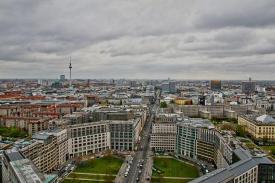
Historically speaking, one of the great assets of the United State workforce has been its ability to get up and go to where the jobs were. A thriving real estate market gave people the freedom to sell their homes and move to a better job, helping people to climb the affluence ladder.
For the past five years a different reality has existed in the US job and real estate markets. The sluggish, if not comatose, real estate market hindered people from moving to either a better job, or in many cases, to any job. Not that there were many jobs to be had, but even in the few instances when there was, someone whose home mortgage was “underwater”(they owed more on their homes to the bank than what their home could actually be sold for,) could simply not afford to move, and was therefore stuck.
Today this vicious cycle seems to be ending, as home prices rise, and buyers are entering the marketplace, and more jobs are coming available.
“Until the real-estate market picked up, people wouldn’t even consider a move without the certainty that they could sell their homes,” said Jerry Funaro, vice president of global marketing for TRC Global Solutions, a domestic and international relocation service based in Milwaukee.
“Companies are now more inclined to make offers since we’re seeing real estate markets across the country coming back,” he said. “Last year, the pace of business started to improve and that momentum has continued in 2013.”


